Authors:
Daria Loi
As a practicing artist and gallery owner, I experience daily how technology continues to shift artistic endeavors, as many have reported before me [1]. In this column, I review five transformations and what they mean for artists, collectors, art trade, and art in general.
First, digital technologies have changed how art is created. Software and digital tools have enabled artists to create more pieces more quickly, while exploring countless options, making guilt-free mistakes, and reducing costs. One can inexpensively iterate a concept multiple times before tackling a painting, create paperless artworks that can be sold to anyone anywhere, and make digital illustrations for publishers and distributors worldwide. Furthermore, 3D printing and generative AI (GenAI) continue to dramatically shift how art is produced, enabling novel techniques, fostering mixed media hybridizations, and expanding artistic horizons.
Additionally, these tools are changing the landscape in terms of who creates art. Today, one can be a sculptor without picking up a scalpel, working with clay, or having any knowledge of sculpting techniques. Leveraging AI, an amalgam made up of hundreds of classic sculptures can be envisioned, and then 3D printed by almost anyone in any color and, to some degree, size. Artworks can be reused and reiterated endlessly by diverse creators, for diverse purposes.
One no longer needs color theory or anatomy training to envision an artwork, as GenAI can suggest, recommend, fix, and improve, while diverse printing technologies can help execute. Armed with inexpensive online courses and new technologies, anyone can create and sell art. We can argue the ethics and quality of some output (and we should), but digital technologies and AI have created the conditions for anyone to be an artist—and there is something freeing as well as depressing about that.
These technologies have also unleashed novel and game-changing art processes and techniques that are resulting in imaginative and unprecedented art creations that we could not have imagined before. As I discussed in a previous column [2], while I believe that the space between AI and art is still "far from being meaningful, sustainable and equitable," I also know that there are many who are "cautiously experimenting, fearfully exploring, open-mindedly learning, and respectfully challenging" to help advance our collective understanding of what it means to be an artist. Next to applauding these pioneers, I also commend those who are leveraging these technologies to collaboratively create art across borders and cultures, unleashing new opportunities for sociocultural and political exchanges, intermingling, growth, and the dissemination of beauty. Outside of these pioneering and collaborative endeavors, I am, however, sad to report that AI technologies have, in many cases, helped generate a lot of art garbage and cacophony.
Today, one can be a sculptor without picking up a scalpel, working with clay, or having any knowledge of sculpting techniques.
A second shift in the art world relates to what art means and what it is. Take for example NFTs (non-fungible tokens) and the billion-dollar crypto-art business. While one could argue that NFTs are revolutionizing the art business by empowering direct ways of selling art, many would point out NFTs' environmental immorality due to their use of blockchains to tokenize (i.e., substantial energy is consumed to mint, buy, sell, and store them). Additionally, many would argue that NFTs represent a vandalistic way to create and conceive questionable art. A similar hate-or-love argument can be made for GenAI art, but, regardless of where one stands, technologies like NFTs and GenAI clearly challenge what art is and what it means.
Then, we have experimental artists who use novel technologies to create experiential art and interactive installations. Examples include Stelarc, the Australian pioneer who for decades has explored the space between code, robotics, and the human body; Sun Yuan and Peng Yu's Can't Help Myself, a robot that used visual recognition sensors to contain a blood-like liquid within a predetermined area; immersive art installations, from teamLab's use of data and sensors to activate awe-inspiring experiences to Rain Room by Random International, Convergence Station by Meow Wolf Denver, and eCLOUD by Nik Hafermaas, Dan Goods, and Aaron Koblin.
One may ask oneself: What is this? Is the object (be it an implant, robot, or interactive room) the art piece or is it how I feel the artwork? Arguably, art has elicited similar questions before, as Marina Abramović's provocative work demonstrates. Technology, however, has unleashed a new category of art meanings, which are constructed outside of and independently from materiality, by machines.
A third transformation relates to where art is experienced. While galleries and museums hold a role in the art world, visual and immersive technologies now create new places and methods to explore art, enabling anyone to experience it anywhere. Creatives leverage online platforms to display work to global digital natives, accustomed to consuming art intangibly. With their audiovisual and high-definition capabilities, platforms such as Instagram help showcase and promote art and more advanced 3D, while virtual and augmented reality platforms enable a compelling sense of presence. As a result, galleries and museums are increasingly leveraging platforms such as Exhibbit and Kunstmatrix as showrooms.
There are several benefits associated with these platforms:
- Artists have personal showrooms to directly connect with prospective collectors.
- Artists can promote and sell their work globally without needing to be affiliated with brokers and galleries.
- Galleries have an alternative to their brick-and-mortar spaces.
- Galleries promote and showcase global art while reducing shipments and storage.
- Art lovers get to experience art without traveling.
As standalone options, however, these platforms rarely provide the same credibility as dedicated brick-and-mortar spaces. Additionally, these technologies are rarely a perfect substitute to real-life experience, especially for 3D and texture-rich works. I will admit that, while I greatly appreciate the democratization surrounding the ubiquitous nature of contemporary art, the romantic in me prefers the poetry of traveling to a special, long-admired artwork. Technology will never substitute or reproduce what I felt in front of a Klimt in Prague or a Van Gogh in Amsterdam—and this knowledge feels profoundly reassuring.
Technology has altered how art is created, experienced, sold, protected, what it is, and what it means.
Entwined with the above, a fourth aspect revolves around the ways technology has shifted how art is sold and who gets to sell it. Platforms such as eBay and Etsy enabled a new form of art trade, bypassing traditional ways and enabling creators to reach audiences directly, while online art auctions sites, such as Christie's and Artnet, offer more specialized and credible spaces to showcase and sell art. Visualization and AR platforms help one appreciate artworks in diverse contexts, enabling artists and traders to reach global audiences, while platforms such as Patreon enable content creators to run subscription services and sell digital products. Finally, tokenization platforms, such as Maecenas, allowed artists and traders to divide an artwork into fractions, and to sell those fractions separately [3], though it's unclear if they're continuing to operate.
Yet, where there is money to be made, predators will arrive. The advance of relatively inexpensive platforms and technologies has created the conditions for vanity galleries to expand their reach and for exploitations to flourish. Unlike traditional galleries and juried processes, vanity galleries use pay-for-play models where artists pay to exhibit, and the gallery makes most of their revenue from artists' fees. Through targeted advertisements on social media, these organizations offer international exposure by exhibiting in shows across the world, but they don't own any galleries. Instead, they use pop-up locations and local support in attractive cities, such as London, Shanghai, and New York, and set up events for general audiences. Sales are typically limited, and these organizations rarely have a reputable collector base, as it is never a priority. Virtualizing their services further, many vanity galleries offer to pay smaller fees to showcase in virtual group shows, where hundreds of artworks are shown in a rotating slideshow on a monitor at 10- or 20-second intervals. Will anyone ever see your artwork? Probably not, but that was never the priority.
Technology has created the conditions for a new category of gallery, where artworks and artists are a means to an end that has little to nothing to do with legitimate art trade, appreciation, and curation. The ultimate point is revenue for the "gallery," and to list a new entry in an artist's résumé.
A final consideration is how technology has shifted the ways in which art is protected and understood. AI and sensors, for example, are used to protect museum collections; deep learning detects forgery [4]; convolutional neural networks create image style transfers [5]; AI re-creates missing parts of an artwork for restoration or research purposes [6]; and X-ray and AI re-create antique artifacts, using 3D printing to build them for educational purposes.
Technology, however, is also making art ownership less secure, especially when it comes to artists' rights. While platforms such as Instagram continue to help artists showcase and promote their work, images of their works are feeding GenAI algorithms, enabling whoever wishes to exploit the artistic talent of others. Last year, a local artist shared that exact copies as well as GenAI versions of her work were being sold without consent by a Russia-based seller and that, more shockingly, they had copyrighted her style as their own. Similarly, a number of MidJourney users have published artworks that are heavily influenced by someone else's work or outright copied. Technology can help protect art, but it works only for those who have the power and resources.
Technology, like any other tool, is shifting the art world, and it will continue to do so. It has altered how art is created, experienced, sold, protected, what it is, and what it means. I am excited about pioneering work and I will continue monitoring progress in that regard. In the meantime, find me in my studio.
1. Widewalls Editorial. The serious relationship of art and technology. Artsper Magazine, Feb. 25, 2025; http://bit.ly/4lqtlB0
2. Loi, D. The inflammable space between AI and art. Interactions 31, 3 (2024); http://bit.ly/3ZHa068
3. Maecenas. Picasso to be tokenized on the Maecenas platform. Medium, Nov. 29, 2018; http://bit.ly/3T6bhzO
4. Frank, S.J. This AI can spot an art forgery. IEEE Spectrum, Aug. 23, 2021; http://bit.ly/4ellZfu
5. Gatys, L.A., Ecker, A.S., and Bethge, M. Image style transfer using convolutional neural networks. Proc of the IEEE Conference on Computer Vision and Pattern Recognition. IEEE, 2016, 2414–2423.
6. McGreevy, N. Scientists used A.I. to recreate a landscape hidden beneath a Picasso painting. Smithsonian Magazine, Apr.13, 2021; http://bit.ly/4kaNl9E
Daria Loi combines design strategy with experience research and innovation to enrich people's lives and humanize technology. She is the founder of imperfecta, an art and design gallery focused on women artists and minority creatives, and Oregon City's arts commissioner. She serves on DemocracyLab's board of directors, and is an honorary professor at the University of Newcastle, Australia. [email protected]
Copyright 2025 held by owner/author
The Digital Library is published by the Association for Computing Machinery. Copyright © 2025 ACM, Inc.
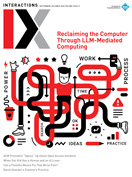
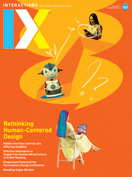
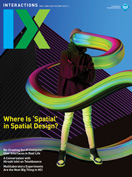

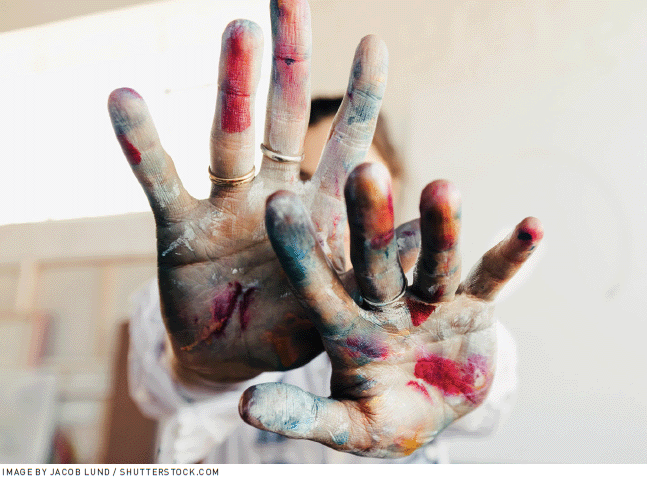
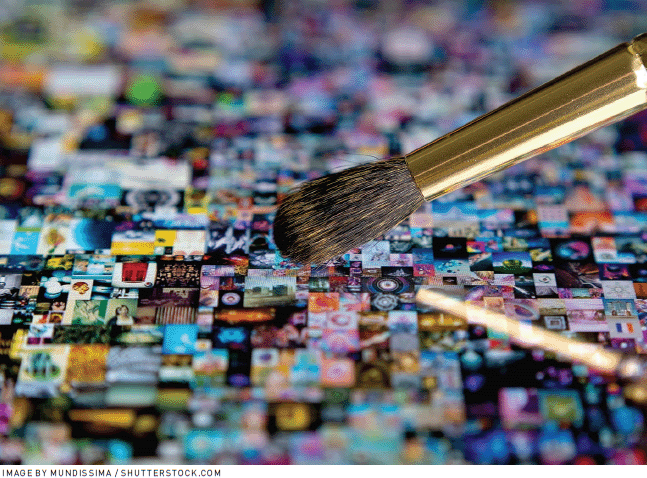



Post Comment
No Comments Found